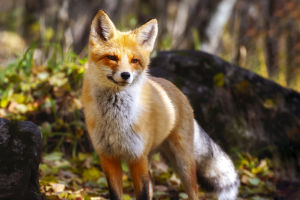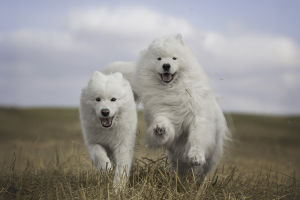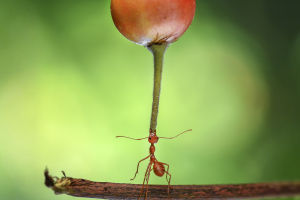We've all heard of polar bears – those massive, majestic creatures that roam the icy landscapes of the Arctic. But have you ever wondered how they manage to survive in such extreme cold?
They are often seen with their thick white fur, which seems like a perfect winter coat designed by nature itself. Yet, there's more to their survival than just their appearance. Let's take a closer look at how these incredible animals thrive in one of the harshest environments on Earth.
The Importance of Their Size
One of the key reasons polar bears can handle such cold temperatures is their impressive size. Imagine if you were a tiny animal living in the Arctic; the cold winds would probably feel unbearable. But polar bears are built differently.
Adult male polar bears can weigh between 400 to 600 kilograms, and sometimes even more. This massive size means they have more fat and muscle, which acts as insulation against the cold. Simply put, the bigger the body, the smaller the surface area for heat to escape, making it easier for them to maintain their body temperature.
Thick Layers of Fat for Extra Warmth
Speaking of fat, it plays an essential role in helping polar bears stay warm. Their thick layer of fat beneath the skin can reach up to 10 centimeters, providing excellent insulation. But this fat isn't just for warmth; it also serves as an energy reserve.
In the Arctic, food can be scarce, especially during the winter months, so the fat stores are crucial for survival. It's as if polar bears are living in a giant thermos, locking in the heat and energy they need to survive the harsh conditions.
The Unique Structure of Their Fur
Polar bears' fur is another remarkable feature that helps them survive the extreme cold. Their fur is not only thick and dense, but the outer layer is also transparent, giving it a white appearance when sunlight hits. This structure helps reflect sunlight, allowing them to absorb some warmth. What's even more fascinating is that the hair is hollow, which makes it even better at trapping heat. This special design allows them to stay warm even while swimming in icy waters. Imagine if their fur was solid – the cold water would quickly drain all their heat, but thanks to the hollow hair, they can move through cold waters with ease and remain warm.
Behavioral Adaptations for Survival
Polar bears don't just rely on their physical features to survive – their behavior also plays a significant role. During the colder months, they often seek shelter in snow dens or behind ice blocks to reduce heat loss. These clever hiding spots help them conserve warmth in the freezing environment. Additionally, when the sun comes out, polar bears will often bask in the sunlight to absorb some of the warmth, further aiding in temperature regulation.
They're Not Completely Immune to the Cold
It's important to remember that even though polar bears are built to survive in freezing conditions, they are not immune to extreme cold. If they become sick or their fat reserves run low due to a lack of food, they can face serious survival challenges. In these situations, polar bears, like any other creature, are vulnerable to the harsh environment. Their survival depends on both their physical adaptations and the availability of food resources in their habitat.
How They Reproduce to Cope with the Cold
Polar bears have also adapted their reproductive strategies to ensure their young can survive in such a harsh environment. Female polar bears give birth in snow dens during the winter months, offering a safe, insulated place for the newborn cubs. At birth, the cubs weigh only around 600 grams and rely entirely on their mother for warmth and nourishment. As they grow, their fur and fat layer develop, allowing them to eventually adapt to the frigid conditions. This survival strategy ensures that the next generation of polar bears is prepared to face the extreme cold.
Conclusion: The Perfectly Adapted Arctic Survivors
In summary, the polar bear's ability to survive in the frigid Arctic environment is a result of several key factors: their large size, thick fat layer, unique fur structure, and smart behavioral habits. These factors work together to make polar bears the kings of the cold. They're not just a stunning example of nature's resilience but also a testament to the power of evolution in adapting to extreme environments.
However, polar bears' lives are now at risk due to climate change and the shrinking of their natural habitat. As their icy home melts away, their survival is increasingly threatened. Let's not forget that these magnificent creatures need our help to continue thriving in their environment. So, as we admire the beauty of polar bears, we must also remember to protect their home and contribute to preserving the natural world for generations to come.
Lykkers, isn't it incredible to learn how perfectly these animals are adapted to their environment? Let's continue to spread awareness and do what we can to protect the natural wonders of our world!


